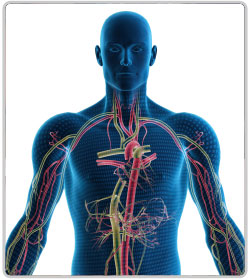Acromegaly - Treatment
Treatment options are surgical removal of the tumor, radiation therapy, and injection of a growth hormone blocking drug like bromocriptine.
Treatment of Acromegaly depends on the cause of the disease. The goal of treatment is to restore the pituitary gland to normal function, producing normal levels of growth hormone, and to relieve the pressure that the growing pituitary tumor exerts on the surrounding brain areas. Treatment may include removal of the tumor (surgery), radiation therapy, and injection of a growth hormone blocking drug (drug therapy).
Surgery:
The principal treatment for Acromegaly is surgical resection of the GH secreting pituitary adenoma. It is the most effective and rapid treatment. The surgery relieves the pressure on the surrounding brain regions and leads to lowering of GH levels. If the surgery is successful, facial appearance and soft tissue swelling improves within a few days. Surgical complications includes CSF leak, damage to the surrounding normal pituitary tissue and meningitis.
Radiotherapy:
Radiation therapy has been used both as a primary treatment and combined with surgery or drugs. It is usually reserved for patients who have remnants of the tumor even after surgery. Radiation therapy is given in divided doses over four to six weeks. This treatment lowers GH levels by about 50 percent over 2 to 5 years, but it causes a gradual loss of production of other pituitary hormones. Other rare complications associated with radiation therapy are loss of vision and brain injury.
Drug therapy:
Drugs are basically used to reduce both GH and IGF-1 secretion and tumor size. Bromocriptine (Parlodel) is taken orally and is given in divided doses of about 20 mg daily. Side effects include gastrointestinal upset, nausea, vomiting, light-headedness when standing, and nasal congestion. Octreotide (Sandostatin) and lanreotide (Somatulin) are synthetic forms of a brain hormone resembling somatostatin that stop the production of GH secretion. These drugs must be injected every 2 to 4 weeks for effective long-term treatment. Side effects include digestive problems such as loose stools, nausea, and gas formation, development of gallstones, and in rare cases diabetes.
Growth hormone antagonist (GHA) therapy is a new treatment option. Pegvisomant is both well tolerated and very effective at quickly normalizing GH and IGF-1 levels. It belongs to the family of growth hormone receptor antagonists. It blocks the action of the endogenous growth hormone molecules and thereby is able to control disease activity of acromegaly in virtually all patients.








